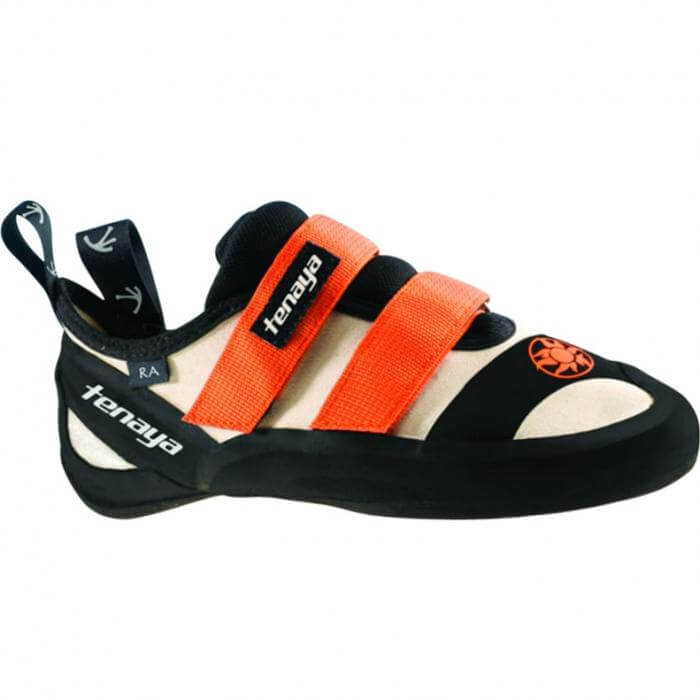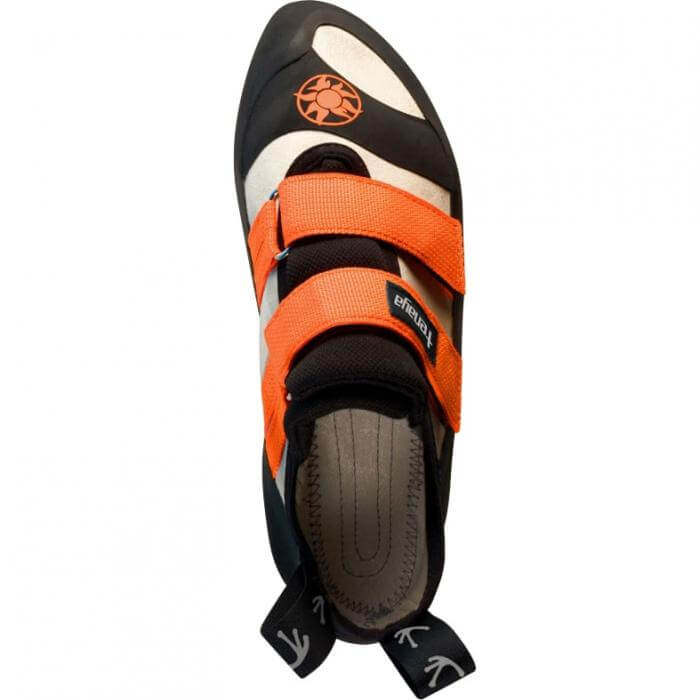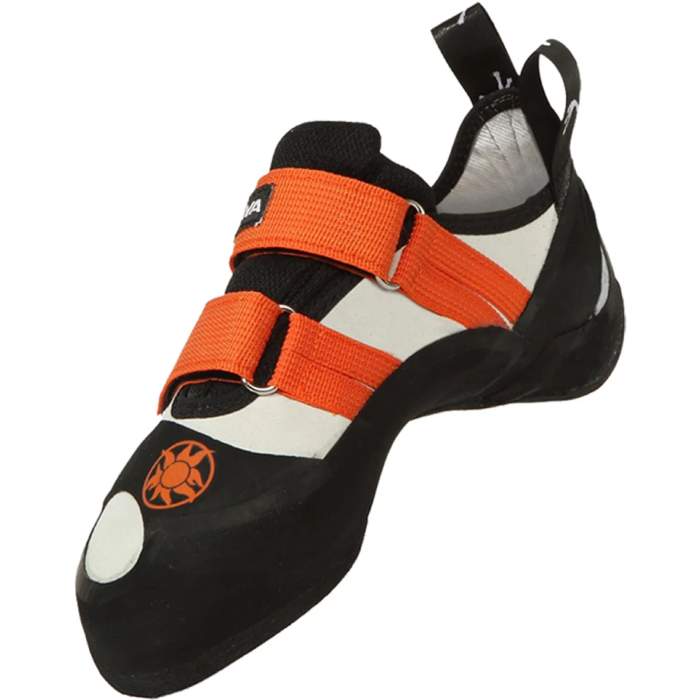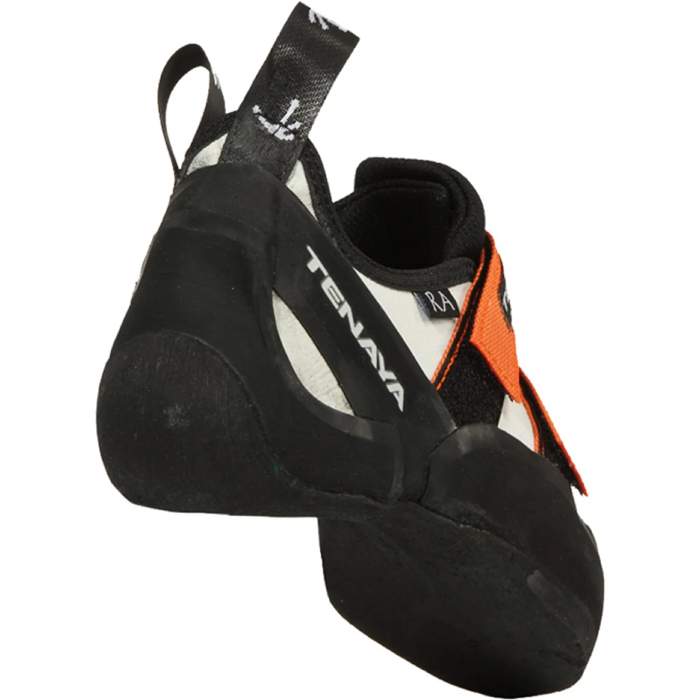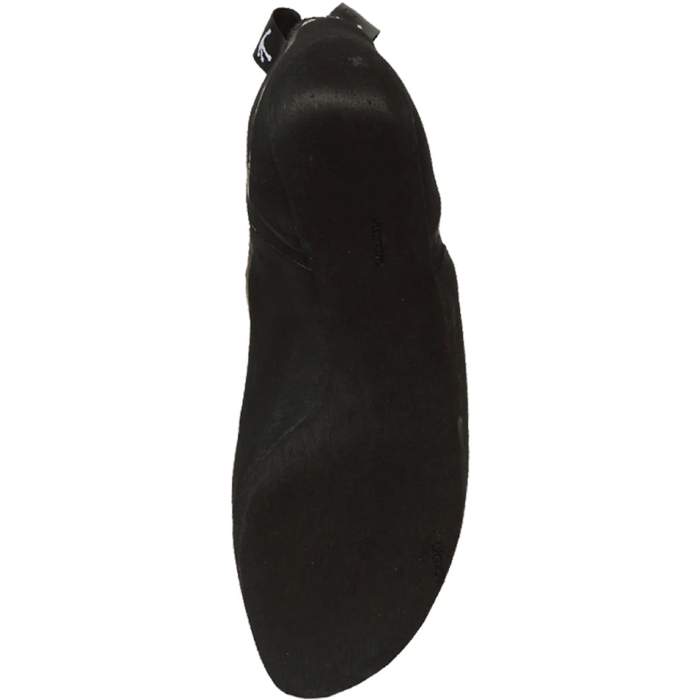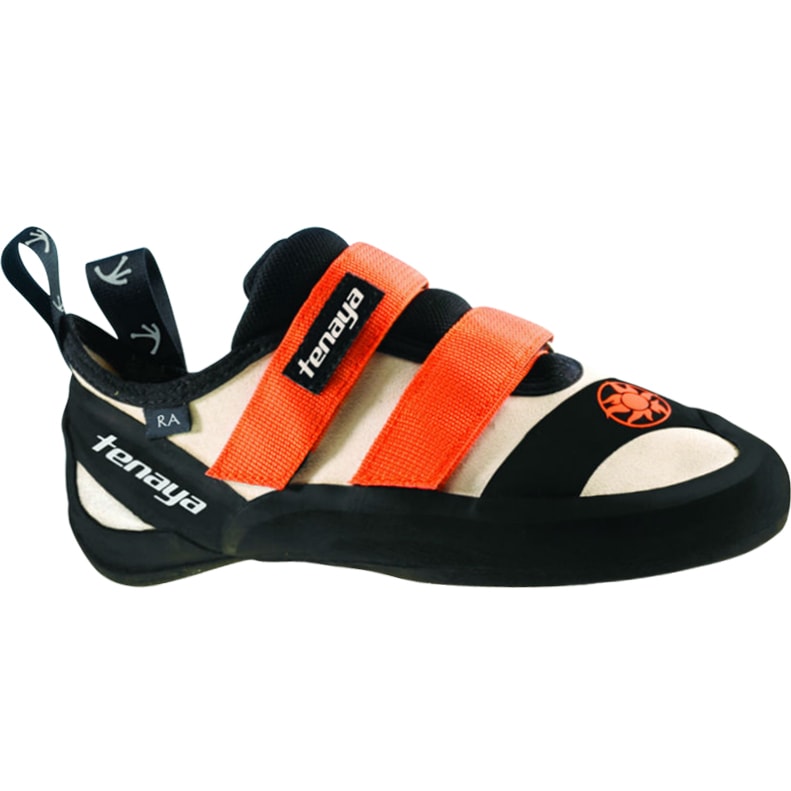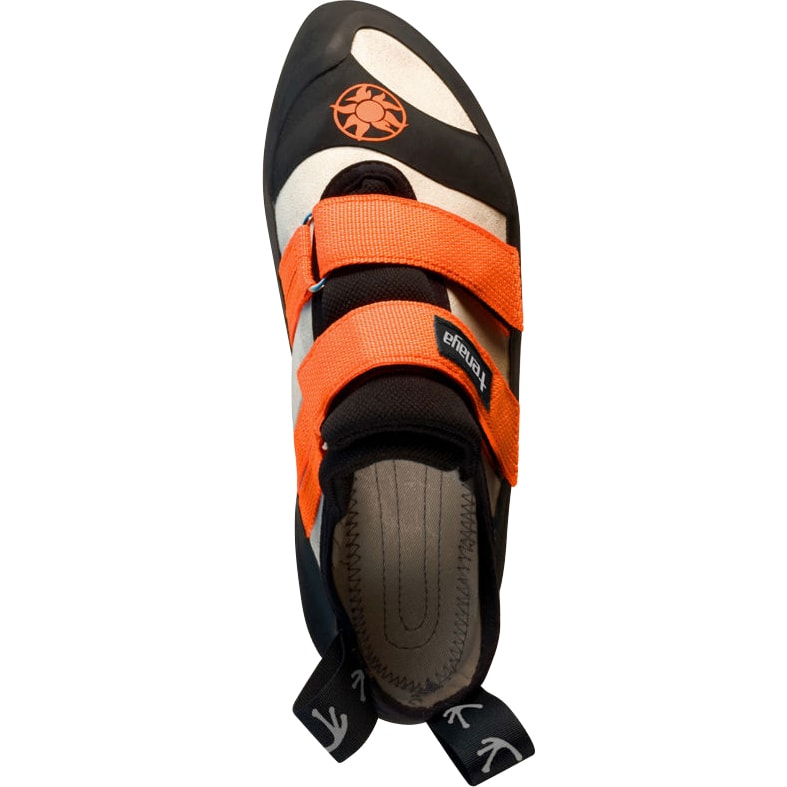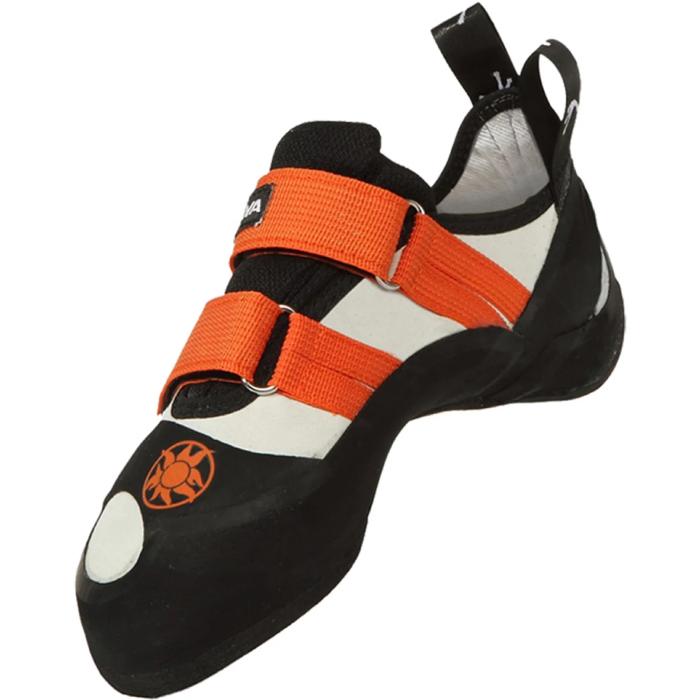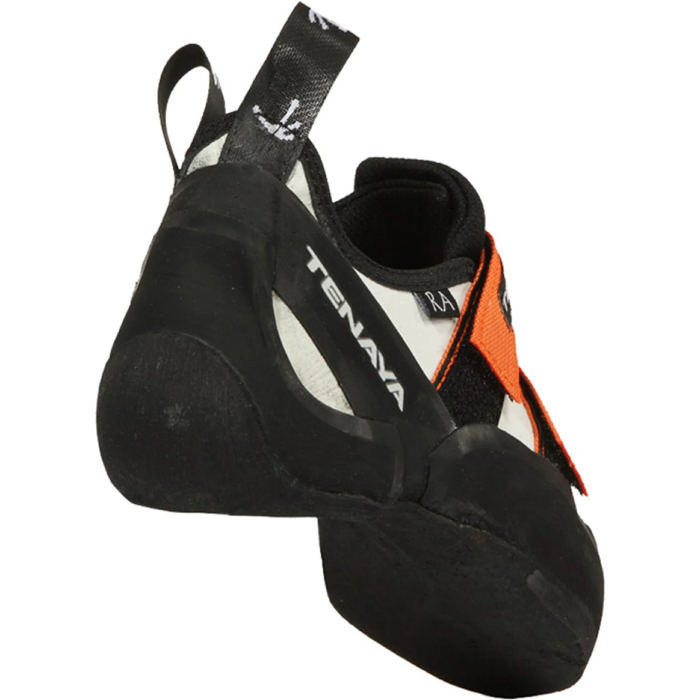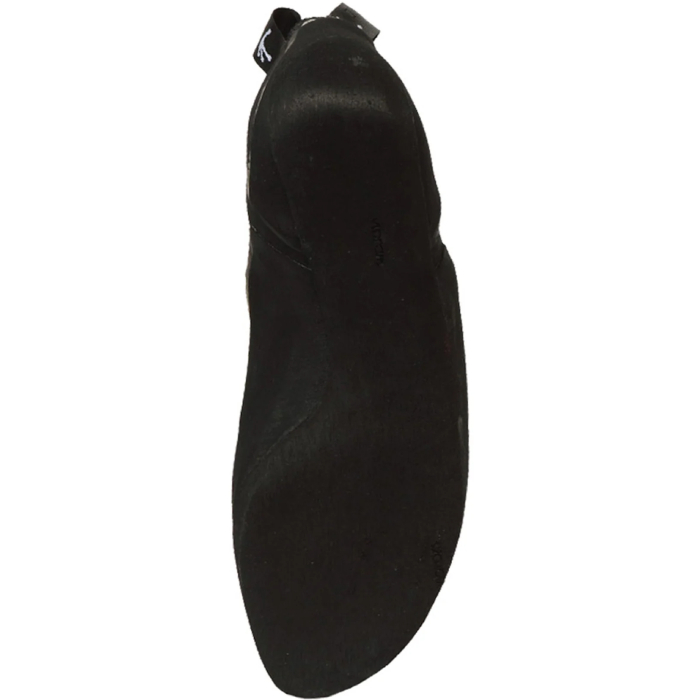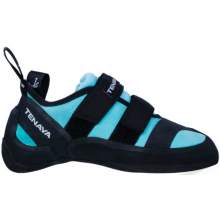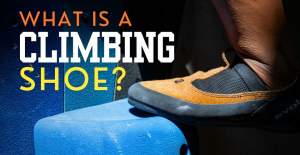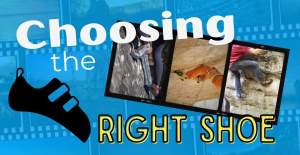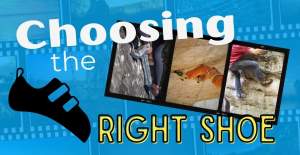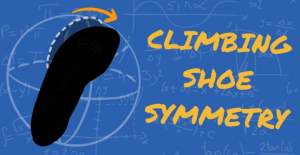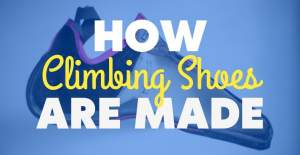Ra
Description
Ra is a climbing shoe offering high technical performance coupled with surprising ease of use, comfort and above all an extraordinary response under the most demanding conditions.
Manufactured around a shoe horn with the same asymmetric grading as the Aqua+, it is designed to adapt to your foot on extremely difficult ascents.
Its combination of materials and the perfect balance offered by all its features guarantee surprising results on difficult stone faces and microscopic grooves as well as in the hard work of friction and adherence.
Retail price
When you click a link below and then checkout online, no matter what you buy (climbing gear or not), we get a small commission that helps us keep this site up-to-date. Thanks!

| Weight | 680 g Single : 340 g / 12.0 oz |
| Closure Type | 2 Velcro closures |
| Gender | Unisex |
| Volume | Average |
| Sizing Information |
3-14 US M 4-15 US W3-13 UK (mid sizes included) Take your average size for European and/or U.S. based climbing shoe brands. Your Tenaya size should be approximately 0.0 to 0.5 sizes larger than your average size in European brand shoes, or 0.5 to 1 size smaller than your average size in U.S. brand shoes. Downsize the Oasi and Tarifa 0.5 size smaller than this. |
| Best Use (Highest Performance) | All-around |
| Asymmetry | Moderate |
| Tongue Details | not provided by the brand |
| Last Details | Shape: Arched (technical) Construction: not provided by the brand not provided by the brand |
| Upper Material | not provided by the brand Microfiber |
| Midsole Material | not provided by the brand 2D PLT 10 |
| Sole Material | 4.0 mm
Vibram XS Grip
Rand: not provided by the brand |
| Footbed Lining | TXT treated cotton |
No reviews yet.
When I was given the choice of Tenaya shoes to review, I chose the Ras because they fit my three criteria of a rock shoe—Velcro instead of laces, stiffness and fit. For eight months, I put them to the test climbing at the gym, bouldering, and climbing trad, sport and multi-pitch routes in Vedauwoo, Wyoming, and Eldorado Canyon, Lumpy Ridge, Boulder Canyon, Clear Creek Canyon and Puoux, Colorado, as well as the Moab, Utah, area. In complete honesty, the only thing I didn't like about these shoes was a purely cosmetic issue, which I will get to later. But first, the good stuff....
At this point, I’m pretty comfortable stamping the RA as a top-tier, all-around shoe that’s a little biased toward cracks, comparing favorably to the La Sportiva Katana in many ways. Granted, getting a good fit is key, so the RA might not be ideal depending on how well your foot matches the last, but it’s a well executed, extremely capable shoe, particularly if you prefer more sensitive shoes.
If you’re really looking for a do-it-all shoe, particularly one that errs on the side of crack climbing competency, this is about as good an option as currently exists. Know that you’re going to lose some toe power, but for a crack-ready velcro slipper, the RA performs at a commendably high level.
a great shoe. I definitely felt a boost in foot performance when I put these on; indeed when footwork became an issue I reached for these and invariable sent the problem or route. They have a good use of materials and are comfortable to wear.
“The fit is perfect when I first put them on—no extraneous space or volume anywhere, even the heel,” one tester said. She regularly finds too much heel space in most shoes, even though her foot ranks as medium-width, medium-volume, and medium-arch. Our narrow-footed tester was pleased with the Ra, too. They are a good edging shoe, as they performed well on both Rifle and Eldo polish, keeping up with our tester’s favorite super-precision shoe. Comfort level is minimal, but that’s to be expected for this level of performance, as they fall somewhere between a high-performance downturned shoe and an all-day kick.
“I’m in love,” said our longtime shoe tester of the Tenaya Ra ($140; trango.com). “I’ve worn them on everything from slab to dead-vertical to slightly overhanging to roofs, and they perform perfectly everywhere.” Whether you’re running a few dozen endurance laps or trying to redpoint your hardest boulder problem in the gym, you’ll find high-performance edging, hooking, and smearing.

